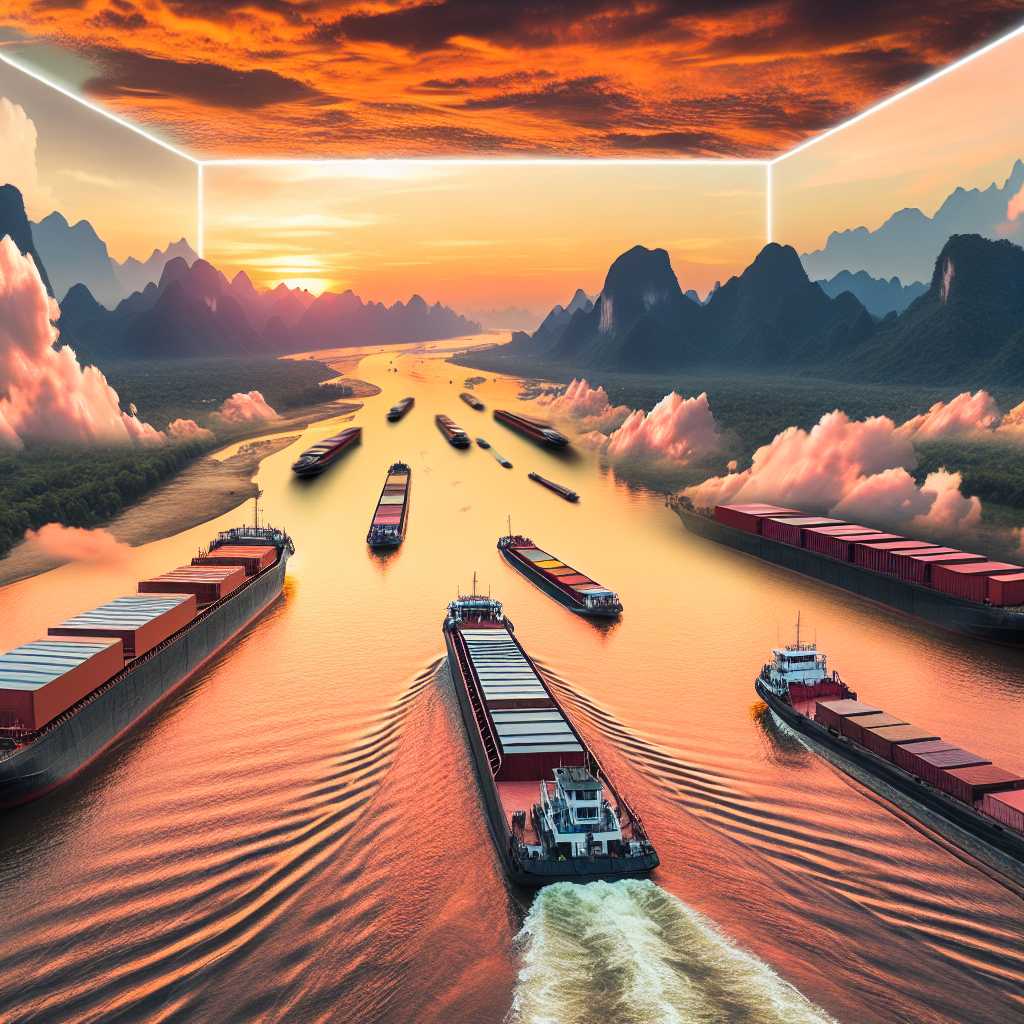The Multifaceted World of Barge Transportation
Barge transportation is a versatile and cost-effective mode of moving goods along rivers, canals, and other inland waterways. As an integral part of the global supply chain, barge transport contributes significantly to the economy by facilitating the movement of bulk commodities. This article provides an in-depth look at the various aspects of barge transportation, from its history and development to the types of barges used today.
History of Barging: Navigating Through Time
The history of barge transportation is as old as civilization itself, with early instances traced back to ancient times when man first started exploring and using waterways for movement and trade. With human advancements, these simple boats evolved into the barges we see today.
In ancient civilizations like Egypt, large riverboats depicted on hieroglyphs were effectively barges. These vessels were essential for transporting people and goods along the Nile River. In medieval Europe, canals became the highways of their era, with barges playing a vital role in moving merchandise between towns and cities.
The industrial revolution of the 18th and 19th centuries saw major developments in barge design and propulsion, such as the introduction of steam power which subsequently evolved into diesel-powered pushboats that propel modern barges. The capacity and efficiency of barges have only increased with time, solidifying their place in contemporary logistics.
Modern Barges: Types and Uses
Today, there are a multitude of barge types designed to transport a myriad of commodities. Some prominent types are discussed below.
Deck Barges: The Flat Surface Providers
Deck barges are flat-bottomed vessels that provide a flat surface for heavy or bulky cargo that might not fit within the confines of other transportation means.
Hopper Barges: Movers of Bulk Commodities
Hopper barges have open tops for loading goods like coal, grain, or sand. Once at their destination, the contents can be dumped through the bottom or offloaded using cranes and other equipment.
Tank Barges: Ideal for Liquids
As the name suggests, tank barges transport liquid cargoes, including petrochemicals, industrial chemicals, and even potable water. They are essentially floating tanks with extensive safety measures in place to prevent spillage or contamination.
Self-Propelled Barges: The Independent Movers
Unlike traditional barges that need a tow or push-boat, self-propelled barges contain their own engines and navigation systems – granting them independence and flexibility for certain journeys.
Economic Significance and Environmental Considerations
The economic impact of barge transportation is considerable. It is among the most cost-effective means to move large quantities of goods. When compared to railroad or truck transport, barges have a high carrying capacity, leading to less fuel consumption per ton-mile which translates into lower emissions.
Environmentally speaking, barge transport reduces congestion on roads and lowers greenhouse gas emissions relative to land transport methods.
However, it is not without potential environmental drawbacks. Water pollution through accidental spills, emissions from diesel engines, and infrastructure development affecting marine habitats are some concerns associated with barge transportation. Sustainable practices are continually being explored to address these issues.
Infrastructure and Operations: Keeping the Cargo Moving
Maintaining waterways and ensuring they’re navigable is crucial for barge operations. This involves dredging activities, lock maintenance (in navigable canals), and managing water traffic.
Moreover, comprehensive logistics plans are essential for timely operations—balancing traffic flow on busy waterways while integrating with other links in the supply chain such as ports, railroads, or trucking services.
Future Prospects: Innovation on the Waterways
The future of barge transportation may involve technological advances like automation for navigation systems or even propulsion. There’s also ongoing research into alternative fuels like LNG or biofuels to reduce emissions further.
Additionally, expansion projects for canals and rivers globally could open up new routes for barge transportation, enhancing its capacity and resilience as part of an intermodal freight system.
Challenges: Cautious Navigation Ahead
While there is great potential for growth in barge transport, challenges remain due to economic fluctuations affecting freight rates, evolutions in trade patterns potentially diminishing demand on certain routes, and climate change impacts which could alter water levels on key waterways.
Upgrades to aging infrastructure coupled with strategic planning to assess longer-term risks and opportunities will be essential strategies for those involved in this industry.

